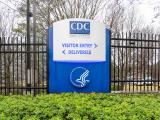Apr 9, 2009 (CIDRAP News) Foodborne disease rates in 2008 stayed about the same as in the previous 3 years, underlining the need for renewed efforts to improve food safety, the Centers for Disease Control and Prevention (CDC) reported today.
"We recognize that we have reached a plateau in the prevention of foodborne disease and there must be new efforts to develop and evaluate food safety practices from the farm to the table," said Robert Tauxe, MD, MPH, deputy director of the CDC's foodborne disease division, in a news release.
Despite many efforts to prevent foodborne diseases, including new control measures in the wake of recent high-profile outbreaks, "progress toward the national health objectives has plateaued, suggesting that fundamental problems with bacterial and parasitic contamination are not being resolved," the CDC said in this week's issue of Morbidity and Mortality Weekly Report.
The new report is from the CDC's FoodNet surveillance system, which gathers foodborne disease data from 10 states that account for about 15% of the US population.
Infection rates for many foodborne pathogens have dropped significantly since the first years of FoodNet surveillance, 1996 through 1998. "However, these declines occurred by 2004 and there really has been little recent change," Tauxe said at a press teleconference today.
For Salmonella, the most common pathogen covered in the report, the infection rate has not changed significantly since the 1996-98 time frame, the CDC reported. The rate in 2008 was 16.2 cases per 100,000 people, which is a bit higher than the 14.92 per 100,000 in 2007 and more than twice the government's "Healthy People 2010" goal of 6.8 cases per 100,000.
The incidence of Cryptosporidium cases also has stayed about the same over the 13 years of FoodNet surveillance, the report says.
FoodNet identified 18,499 laboratory-confirmed cases of foodborne disease in 2008, up a little from 17,883 cases reported in 2007, the CDC reported. Total cases and the rates per 100,000 population for the various pathogens were as follows:
- Salmonella, 7,444, 16.2
- Campylobacter, 5,825, 12.68
- Shigella, 3,029, 6.59
- Cryptosporidium, 1,036, 2.25
- Escherichia coli O157, 513, 1.12
- Shiga-toxin-producing E coli non-O157, 205, 0.45
- Yersinia, 164, 0.36
- Listeria, 135, 0.29
- Vibrio, 131, 0.29
- Cyclospora, 17, 0.04
Variations by age and state
By age-group, infection rates for all the pathogens except Cyclospora and Vibrio were highest in children under age 4. For example, these children had rates of 74.65 cases per 100,000 for Salmonella and 28.54 per 100,000 for Campylobacter.
For many of the diseases, hospitalization and death rates were highest for people aged 50 and older. However, the case-fatality rate for E coli O157 was highest in children under 4, at 2.8%, and case-fatality rates for Cryptosporidium and Yersinia were highest in 20- to 49-year-olds at 1.3% and 3.0%, respectively.
The infection rates varied considerably from state to state. For example, Campylobacter rates ranged from 7.15 cases per 100,000 in Georgia to 30.23 per 100,000 in California. For Salmonella the range was from 10.15 in New York to 26.40 in New Mexico.
"There's a little variety from one state to another," said Tauxe. "Different states have a different spectrum of problems. Georgia has a little less Campylobcter and a little more Salmonella than others." However, he added, "The overall trends for each state resemble what we see in the network as a whole."
Last year's trends
Salmonella cases that were part of recognized outbreaks numbered 547 in 2008, or 7.4% of the total, the CDC reported. The year brought two large multistate outbreaks: one linked to imported peppers in the spring and summer, and one linked to peanut products, which started in late fall and continued well into this year.
In addition, 132 (25.7%) of the 513 E coli O157 cases in 2008 were linked to outbreaks, the report says.
It also notes that the US Department of Agriculture (USDA) found a higher proportion of E coli O157 in ground beef samples in 2008 than the year before: 0.47% versus 0.24%. But it was unclear whether this was due to focused sampling of higher-risk facilities, improved detection, or an actual increase in contamination.
On the other hand, the USDA has reported a recent decrease in Salmonella in its testing of raw chicken samples, from 11.4% in 2006 to 7.3% in 2008, the report says.
Steps to reduce foodborne disease
Speaking at the press conference, Dr. David Acheson, the Food and Drug Administration's (FDA's) associate commissioner for foods, said his agency is involved in discussions with the Department of Health and Human Services and Congress on new authorities and resources to help prevent foodborne disease. "We're working very closely with the administration and Congress on how to address these issues," he said.
In particular, he mentioned that the FDA is working with six states on a pilot project to set up "rapid response teams" for foodborne outbreaks (see related story).
Tauxe, in the CDC news release, said, "The foodborne division at CDC is planning to increase the capacity of several health departments so that outbreaks can be better detected and investigated."
But he did not explain if he was referring to state or local health departments or some other agencies. CDC spokeswoman Arleen Porcell-Pharr told CIDRAP News this afternoon that she couldn't give any more information because the details are still being worked out.
In other comments, Acheson said the FDA hired about 150 food inspectors in 2008. Dr. Steve Sundlof, also with the FDA, said the agency is in the process of hiring 32 food safety scientists and consumer safety officers.
In response to questions, officials at the press conference offered some observation on long-term trends in food safety.
"There's no question that the food supply is much safer than it was 50 or 100 years ago," said Tauxe. "Diseases like typhoid have essentially disappeared, and many animal diseases have disappeared that used to come through the food supply." He added that, as described in today's report, foodborne diseases have declined since the mid 1990s, but the rates have leveled off in the last few years.
In response to a question as to whether the industrialization of the food supply has made food less safe, Sundlof said, "I don't think there's any one real good answer. As supply chains get longer and longer, there's more opportunities for introduction of contamination that can have a public health effect. But all those can be managed and managed well, but it takes good preventive efforts by industry to make sure that happens. One problem in one single ingredient can have very wide distribution if a company distributes nationally or internationally."
CDC. Preliminary FoodNet data on the incidence of infection with pathogens transmitted commonly through food10 states, 2008. MMWR 2008 Apr 10;58(13):333-7 [Full text]
See also:
Apr 9 CDC press release
http://www.cdc.gov/media/pressrel/2009/r090409.htm
Apr 10, 2008, CIRAP News story "Foodborne disease rates changed little in 2007"

















